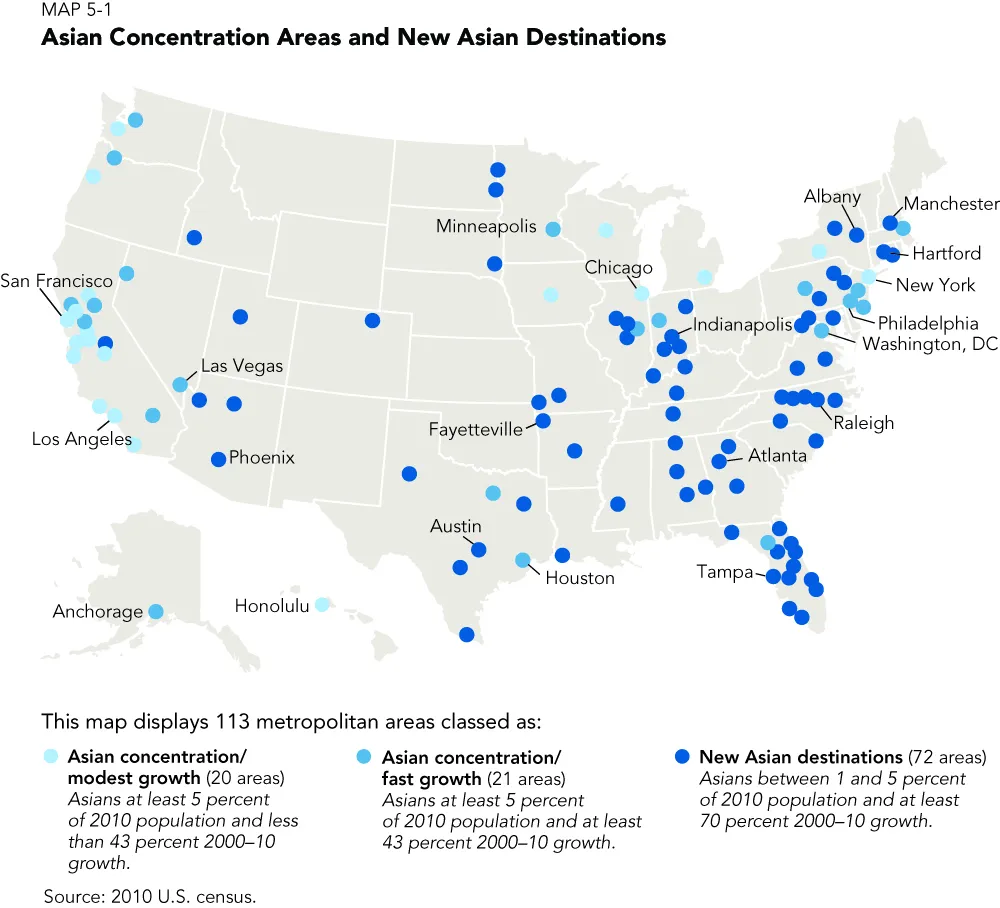The Asian population in the United States is very much in a state of flux, characterized by fast growth and dispersal to new areas. These patterns became especially visible in the first decade of the 2000s when nearly all of the nation’s metropolitan areas showed Asian population gains.
Still it is useful to distinguish the most rapidly growing areas from more traditional Asian settlements, as the former represent the cutting edge of this new Asian population dispersion.
The 72 “new Asian destinations” depicted on the map experienced rapid Asian growth starting from small base population. Among these are Sun Belt areas like Atlanta, Austin, Raleigh and Phoenix, as well as northern areas such as Indianapolis, Albany and Hartford.

Many of these places have strong knowledge economy concentrations or university-related high tech centers. What is especially noteworthy is that among the many Asian nationalities, Asian Indians comprise disproportionate shares of growth to these areas. In Raleigh, for example, the Asian population grew by 130 percent between 2000 and 2010, and Asian Indians contributed to more than half of that growth
At the other extreme are large established Asian settlement areas (termed “Asian Concentration/Modest Growth” areas on the map). These 20 areas include the primary landing places for Asian immigrants, such as Los Angeles, New York and San Francisco and still house almost one half of all Asians in the United States.
But the dispersion of Asians will continue to all parts of the country that offer employment in both high- and low-skilled jobs.
Material adapted from Diversity Explosion: How Racial Demographics Are Remaking America by William H. Frey, 2014
The Brookings Institution is committed to quality, independence, and impact.
We are supported by a diverse array of funders. In line with our values and policies, each Brookings publication represents the sole views of its author(s).




Commentary
New U.S. Destinations for Asians See Rapid Growth
January 15, 2015